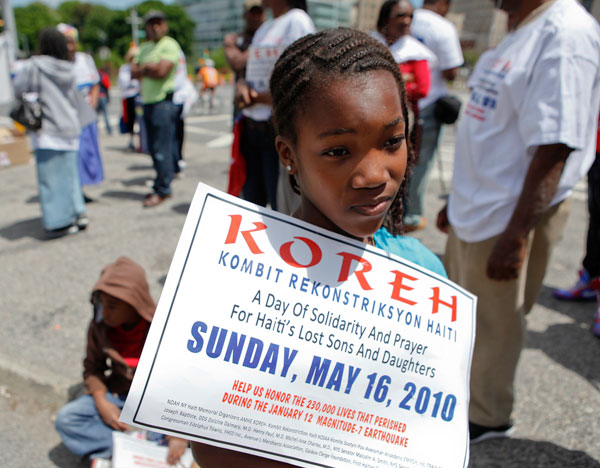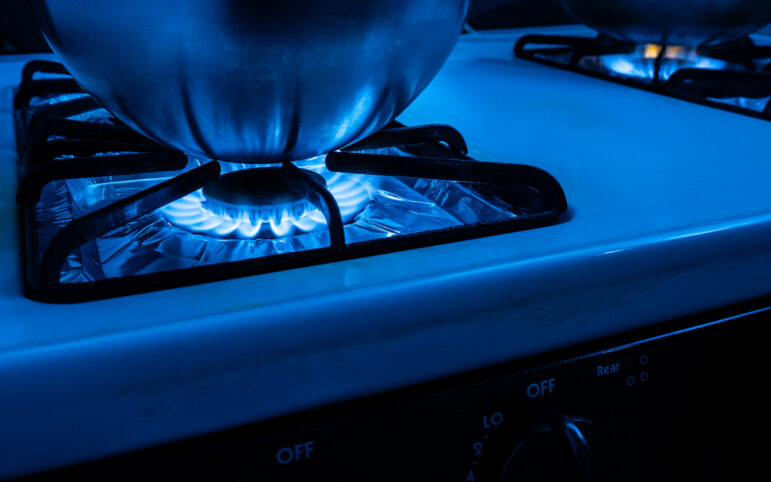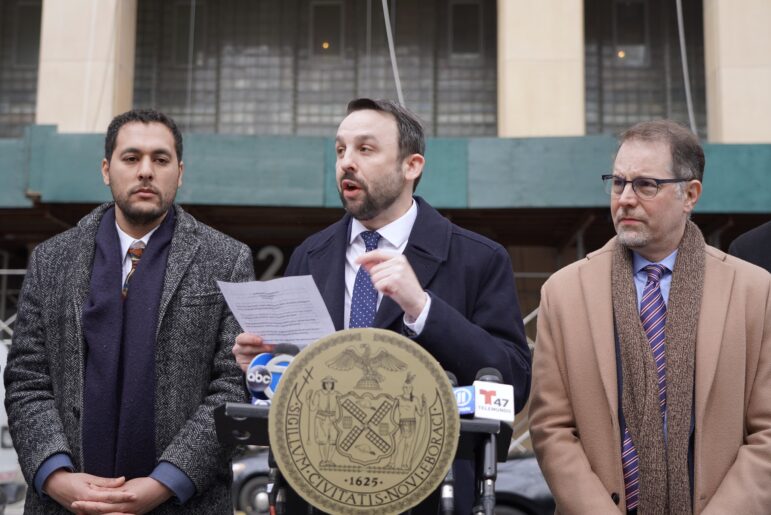
Photo by: Marc Fader
Jovenska Bernardin, 9, attended the Sunday prayer gathering at Grand Army Plaza in Brooklyn as part of “A Day of Solidarity and Prayer for Haiti’s Lost Sons And Daughters.”
This week is a special one for Haitians: Today, May 18, is Haitian Flag Day, commemorating the day in 1803 when Haitian revolutionaries chose the blue-and-red banner to represent their country; on Thursday, Haitians worldwide mark the 267th birthday of Toussaint L’Ouverture, the former slave who helped lead the nation to independence.
This year’s celebrations are simultaneously more subdued and more focused, as the international Haitian community works to rebuild from the devastating earthquake that struck near the capital of Port-au-Prince on January 12, killing an estimated 230,000 people and leaving one million homeless.
Some of that rebuilding work is going in and around Brooklyn’s large Haitian community, where efforts to direct aid to the ravaged country run parallel to attempts to serve Haitians displaced by the quake who’ve joined their community in New York.
On Sunday, several dozen New Yorkers of Haitian descent marched from Grand Army Plaza in Brooklyn to Foley Square, where they held a moment of silence to honor the earthquake dead—plus a “moment of appreciation” to give thanks for the international response to the quake, and call for continued attention to Haiti.
Right now, said Delarquy Fleuriot of march organizers KOREH (Kombit Rekonstriction Haiti), conditions in Port-au-Prince are little improved from the immediate aftermath of the quake—while food, water, and medical supplies have arrived, housing reconstruction hasn’t yet begun. “We still have people living in tents,” he said. “It’s going to rain very soon, and we want to make sure that we put these people someplace that we know they are safe.”
Fleuriot ran down the list of immediate needs of the millions of people displaced by the quake: “You’re talking about food, medical supplies, a nice place to live, and a good job.” This last is key, he says, “because the real problem with Port-au-Prince is we had too many people in one place. So now since some of them went to the provinces, we want to keep them there. The best way to keep them there is to put jobs for them to do. As long as they have things to do, trust me, they don’t want to go back to Port-au-Prince.”
One Haitian group working to do just that is Fonkoze, a nonprofit founded in 1994 that is today the nation’s largest microfinance agency, providing loans and banking services for those running or launching small businesses. Fonkoze’s latest project is Zafèn, a new fundraising mechanism by which donors can give money to specific projects in Haiti—buying a freezer for a local lemonade merchant, say, or paying for in-home teachers for disabled children—and see immediately how far there is to go to meet the fundraising goal. Already in the works before the quake, Zafèn had its official launch at a conference at St. John’s University in Queens last month.
Tatiana Benjamin, a Haitian-American Brooklyn College student who helped organize a Zafèn fundraiser last month, says the school’s student government “kind of just fell in love” with the organization after a fellow student tipped her off to it earlier this year. “What we liked about Zafen is that it wasn’t just an organization that was claiming to give all of its funds to Haiti,” she says. “They were directly helping businesses and projects going on in Haiti, so there’s actually a way to monitor where your money’s going.” The group eventually decided on funding a sugar cane farm equipment project, whose profits will be used to help fund school tuition and illiteracy programs for adults.
Meanwhile, parallel efforts are ongoing to raise funds for Haitians here in New York—a group that increasingly includes recent arrivals seeking schools or other institutions that in Haiti have yet to be rebuilt. In February, the Brooklyn Community Foundation joined with United Way of New York City to launch the Hope and Healing Fund, which is raising money for case management, legal aid, arts and education programs to support Haitian-Americans in Brooklyn, which at 76,432 people boasts the third-largest Haitian population in the U.S., trailing only Miami-Dade and Broward Counties in Florida.
The genesis of the fund, says Brooklyn Community Foundation director Marilyn Gelber, came from discussions after the quake of how her organization could get involved in relief efforts. “We’re not an international relief agency. We’re very focused locally,” she says. “And we began to think about what the impact would be on the local community of what just happened.”
The resulting fund, initially seeded with money from BCF and the United Way, gave out its first $250,000 in grants in April, for everything from case management and legal services at Haitian First Church of the Brethren in Canarsie to basic health screenings at SUNY Downstate Medical Center.
Carine Jocelyn of Diaspora Community Services in Park Slope, which received a Hope and Healing grant to start a case management program primarily for Haitian-Americans, says the money should help in aiding the flood of recent arrivals from Haiti, most of whom arrived on tourist visas. “In essence, they’re visitors to the country,” she says. “And so they don’t access to supplemental food vouchers or housing or Medicaid. They’re not eligible to work. If they were students, they’re not eligible to matriculate because they don’t have a student visa. So for those people, it’s really difficult.”
Gelber acknowledges some concern that BCF’s effort will compete against aid requests for direct Haiti relief, something she hoped to address by initially approaching only New York City-based funders. Still, she says, she plans more appeals to the general public—including an online “virtual walkathon”—once the fund has more accomplishments to show.
But the primary need is for Haitians still in Haiti. Diaspora also operates a medical site in Port-au-Prince, and Jocelyn says that conditions there remain dire: “Medical care still is an issue, food access still is an issue. Schools are opening now in some areas, but just the post-traumatic stress stuff is a lot.”
It’s one reason Haitian organizers are hoping to use this week’s holidays to remind people of their home nation’s continued plight. “It’s just really good to see that after all this time has passed by, people are still coming together to form relief efforts,” said Benjamin as she prepared to step off with Sunday’s march. “Because at the end of the day, this is not a problem that is going to get solved in a year. It’s not going to get solved in two years. And initiatives like this help keep the momentum going.”








